Forsythia is a deciduous woody shrub that thrives in full sun and average, well-draining soil.
It’s an iconic harbinger of spring in USDA Hardiness Zones 5-8, where its masses of yellow blooms make for a dramatic yearly display.
This shrub is appreciated for being a hardy, fast grower that requires little maintenance. However, it’s not invincible, and sometimes less than favorable conditions pose a serious threat to its well-being.

We link to vendors to help you find relevant products. If you buy from one of our links, we may earn a commission.
In our guide to growing forsythia we talk about how to cultivate this shrub in the home landscape.
This article discusses hard pruning, a choice of last resort that may rejuvenate a shrub in one of five stressful situations.
What You’ll Learn
Let’s get started!
What Is Hard Pruning?
Routine pruning is the removal of up to one-third of a shrub’s canes to aerate, refresh, and remove damaged, crossing, or inward-facing canes.
Hard pruning is a total makeover. This is a last resort reserved for dying, diseased, damaged, neglected, and poorly pruned shrubs in need of a new beginning.
It’s a process of complete rejuvenation in which an entire shrub is cut down to its crown, or as close to it as possible. This is the point where the woody canes come out of the ground.
The best time to do this is early in the spring, right after blooming, to allow new growth to harden off before the first frost of fall.
Use clean, sharp tools, including bypass pruners, a hand pruning saw, loppers, and a power pruning saw to do the job.
Cut the lowest stems as close to the crown as possible.
Make all cuts at a 45° angle that slants from five o’clock on the left to one o’clock on the right, or facing outward and upward from the center of the shrub.
This promotes outward-pointing growth and fosters healthy airspace in the center.
Maintain a regimen of one inch of water per week in the absence of rain, and possibly a second inch during a prolonged hot, dry spell.
Jumpstart growth with a slow-release, all-purpose fertilizer per package instructions.
The first flush of foliage is a welcome sign that regeneration is taking place. To promote a strong base of stems, cut these first canes by one-half to encourage lateral growth.
5 Reasons to Prune Hard
Hard pruning may be warranted in the event of a variety of adverse conditions.
Let’s take a look at the top five.
1. Winter Kill
A cold-damaged forsythia that doesn’t bounce back in springtime with flowers and foliage may have suffered “winter kill.” This is a catchall phrase for plant tissue death directly related to extreme cold, freezing, and/or wind.
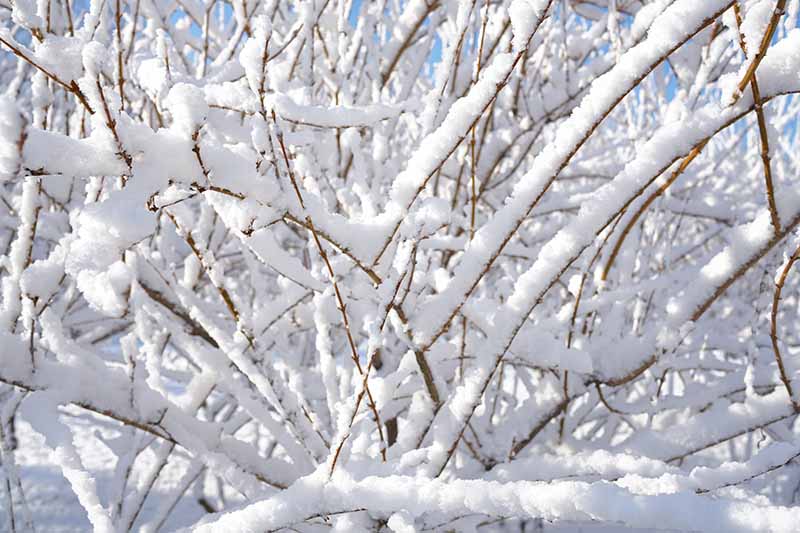
If a shrub shows no signs of life above ground, there’s always a chance that the roots below are still alive. They stay pretty warm in winter, especially beneath a layer of mulch and/or snow.
Before presuming it dead, trim all canes as close to the crown as possible. If no growth is evident by fall, dig up and remove it.
2. Widespread Disease
Although this is a sturdy shrub, it is not immune to disease, especially when stressors like cold damage, old age, and over- or underwatering make it vulnerable.
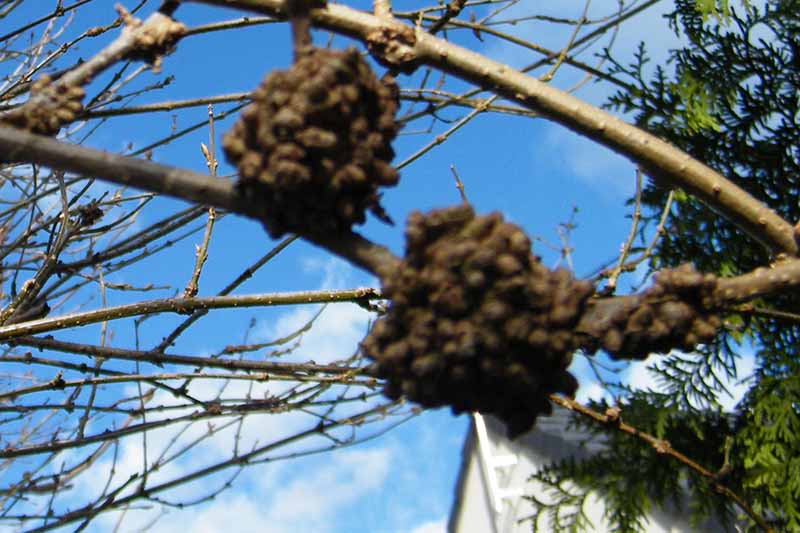
Weak plants, especially overly dry ones, often attract pests that can carry diseases.
Common forsythia diseases include gall, leaf spot, and twig blight. And while minimal damage may only require the removal of affected stems and the application of a fungicide, severe infestation or infection, especially in an old or unhealthy shrub, may call for a complete rejuvenation.
3. Extensive Physical Damage
During the growing season, forsythia stems are supple and sturdy because they contain moisture, and are able to bend without breaking.
However, late in a cold, dry winter, they are not as flexible, and can snap in a gusty wind or ice storm.
During the repeated freezing and thawing cycles of winter, a shrub may rise up out of the ground, a phenomenon called “heaving.”
When the ground thaws, settle it back down and assess the damage at spring flowering time.
If there are multiple broken canes, dead stem tips, few to no flowers, and little to no foliage, cut all of the canes close to the crown and start over.
In the event of major damage from a fallen limb, mowing equipment, or other stressor, a full cut-down may be in order.
4. Overgrowth
Forsythia is wonderful in the spring. It’s one of the first bright spots in the landscape. However, it’s easy to forget it for the rest of the growing season, when it becomes a lush green backdrop to summer floral displays.
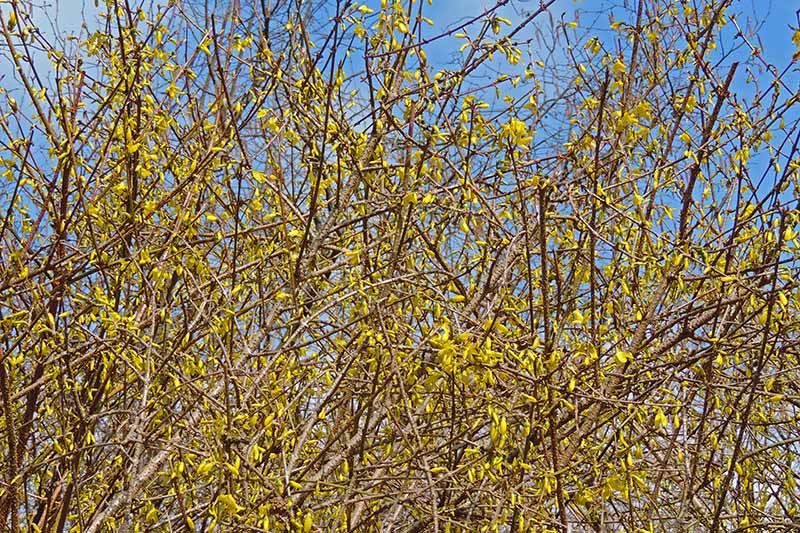
Forsythia is a long-lived shrub that grows fast. Some cultivars reach 10 feet tall. But there can be a difference between a long life and a good life.
All forsythia varieties benefit from a yearly trimming of up to one-third of their old canes to promote vigor.
Shrubs that reach old age without having been refreshed yearly may be big, but not robust. The aging process varies, and can be adversely affected by factors like prolonged moisture stress and extreme cold.
If there are loads of canes, but few flowers and sparse foliage, it’s likely because growth has slowed, so there is less new wood each year to form buds.
Cut all stems down to the crown, then put this bush on a yearly pruning regimen. Just after spring blooming, remove up to one-third of last year’s growth to the base of the canes.
Also, if a younger bush has taken over the garden, cut it down and put it on the same regimen. In two to three years, after it’s reestablished, relocate it as desired.
5. Excessive Top Pruning
If only the tops of hedges or stand-alone specimens are blooming and growing foliage, it may be time for a complete transformation.

This can happen over time when our regular pruning habit is to take a little off the top each year to maintain a particular height and/or shape.
In our tips for pruning, we suggest removing canes to their points of origin. The new canes that grow are long and contain many flower and leaf buds that come out the following spring.

Trimming the tops off bushes results in dense, twiggy growth, and bottom canes that are old and bare.
Take bare-legged shrubs down to their crowns with cutting tools, and let fresh, new ones grow up.
As mentioned, cutting the first flush of foliage by one-half promotes lateral branching near the base. This adds stability that is especially beneficial in windy regions with lots of freezing and thawing in wintertime.
A Bold Restorative Step
I thought I knew a great deal about forsythia because I had propagated it from stem cuttings all along my property perimeter. It turned out that I had a variety so tall, I was forever cutting stems just to keep it at a friendly-neighbor height.
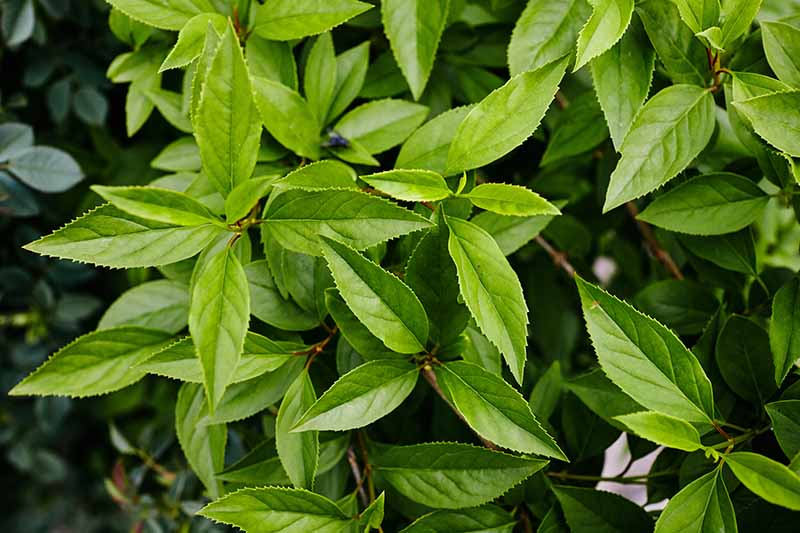
In addition, when I was first getting started, I did the pruning all wrong. I cut mid-stem instead of at points of origin, and wound up with lots of short, choppy stems that bore few blooms and pointed inward, inhibiting airflow.
And finally, I cut off lots of new foliage that contained next year’s buds, and kept the old, until I wound up with bare lower stems.
We all make mistakes, and fortunately, a healthy forsythia shrub is usually a very forgiving one, when it comes to starting over.
If you’ve made a total mess with your pruners, or have never trimmed at all and now have a monster, you may want to make a bold move and cut it all the way down.
Be forewarned, however, that this is very stressful for a shrub, and it is likely to need several seasons to recover. In addition, there’s always a chance that the shock may prove more than it can take, and it will die.
Just in case this happens, use the pruned canes to make hardwood stem cuttings to propagate. They should be sturdy, show signs of life, and have no visible pests or disease symptoms.
Dip them in rooting hormone and poke them into loosened soil in clusters of three to five, spaced four to six inches apart.
When planted in the spring, they’ll have time to establish well before winter dormancy, and may bloom as early as the following spring.
Happy gardening!
Please share your stories and questions about caring for these gorgeous shrubs in the comments below.
And If you found this guide informative and want to learn more about forsythia care, here are more articles on the subject to read next:

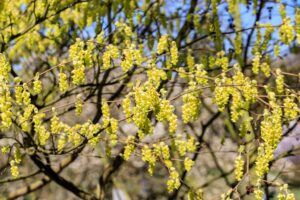


Would have nice to have descriptive photos to accompany article to lessen individual interpretations of the article cutting technique details.
Hi Cherise –
In this article, we consider situations that may warrant hard pruning. If we do an article on how to prune forsythia in the future, we will take your excellent advice and include instructive photos.